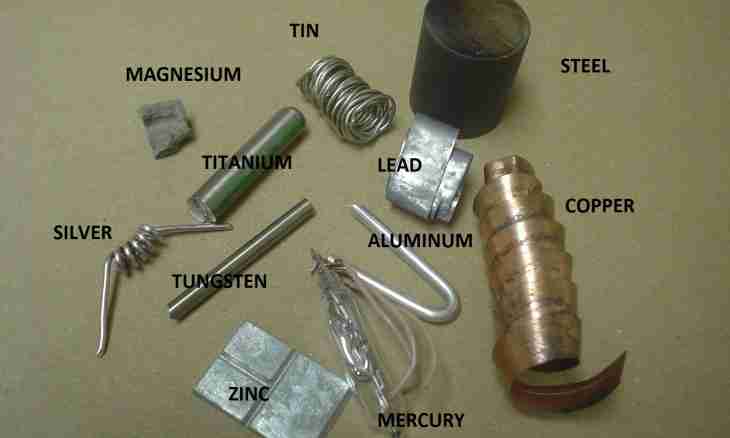All simple substances are divided into two big groups: metals and nonmetals. The first in the nature much more. Each of groups of simple substances has properties, characteristic of it.
Instruction
1. In normal conditions all metals, except mercury, are in strong aggregate state. Nonmetals can be firm, liquid and gaseous. Metals are plastic, i.e. well bend, and nonmetals fragile, in attempt to bend them they break. Metal gloss, and from nonmetals shines only crystal iodine is characteristic of metals. Metals differ in good heat conductivity and conductivity, unlike nonmetals. It is so possible to define group of simple substance on its physical properties.
2. To define metal and nonmetal from Mendeleyev's table, draw a diagonal line from a pine forest to astatine. The elements located above this line belong to nonmetals, lines are lower – to metals. At the same time all chemical elements of secondary subgroups belong only to metals. Thereby it is possible to see visually that it is much more metal elements in the table.
3. In the main subgroup of the first group there are alkaline metals: lithium, sodium, potassium, rubidium, caesium, frantsy. They are called so because at their dissolution in water alkalis, soluble hydroxides are formed. Alkaline metals have an electronic configuration of external power ns1 level, i.e. on an outer sheath contain one valent electron. Giving this electron, they show recovery properties.
4. The main subgroup of the second group consists of alkaline-earth metals: beryllium, magnesium, calcium, strontium, barium, radium. These substances have gray color, at the room temperature they are firm. An electronic configuration of alkaline-earth metals at the external power level – ns2.
5. Elements of secondary subgroups of the table of Mendeleyev carry to transitional metals. In atoms of these elements there are valent electrons which are on d-orbitals and f-orbitals. Transitional metals have variable oxidation levels. In the lowest oxidation levels they show the main properties, in the highest – acid, in intermediate – amphoteric.
6. The top right corner of a periodic system of elements is occupied by nonmetals. On external power level atoms of nonmetals contain a large number of electrons therefore it is energetically favorable to it to accept additional electrons, than to give the. In the second period nonmetals are elements from a pine forest to neon, in the third – from silicon to argon, in the fourth – from arsenic to krypton. Nonmetals of the fifth period – tellurium, iodine, xenon, the sixth – astatine and radon. Hydrogen and helium also carry to nonmetals.

